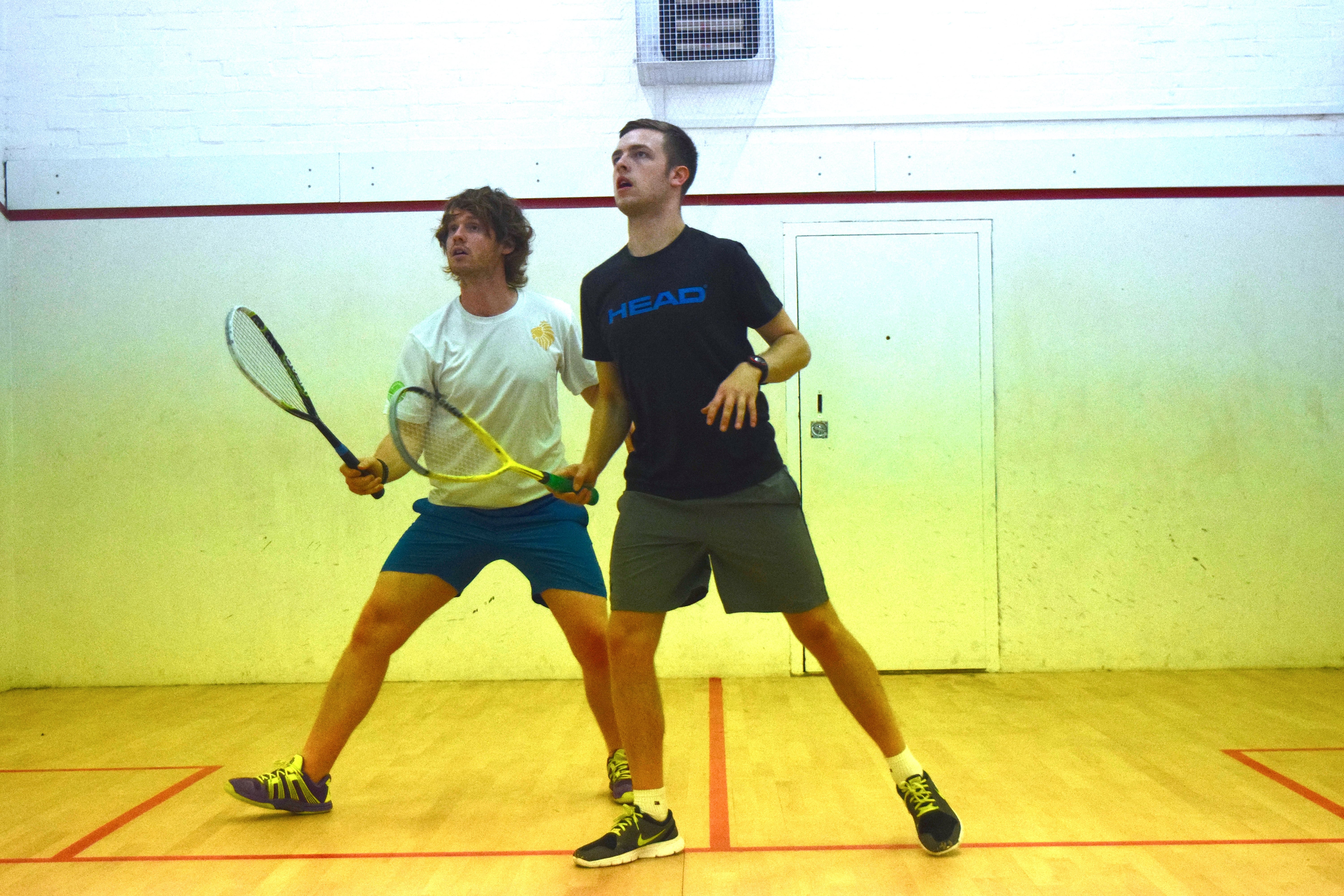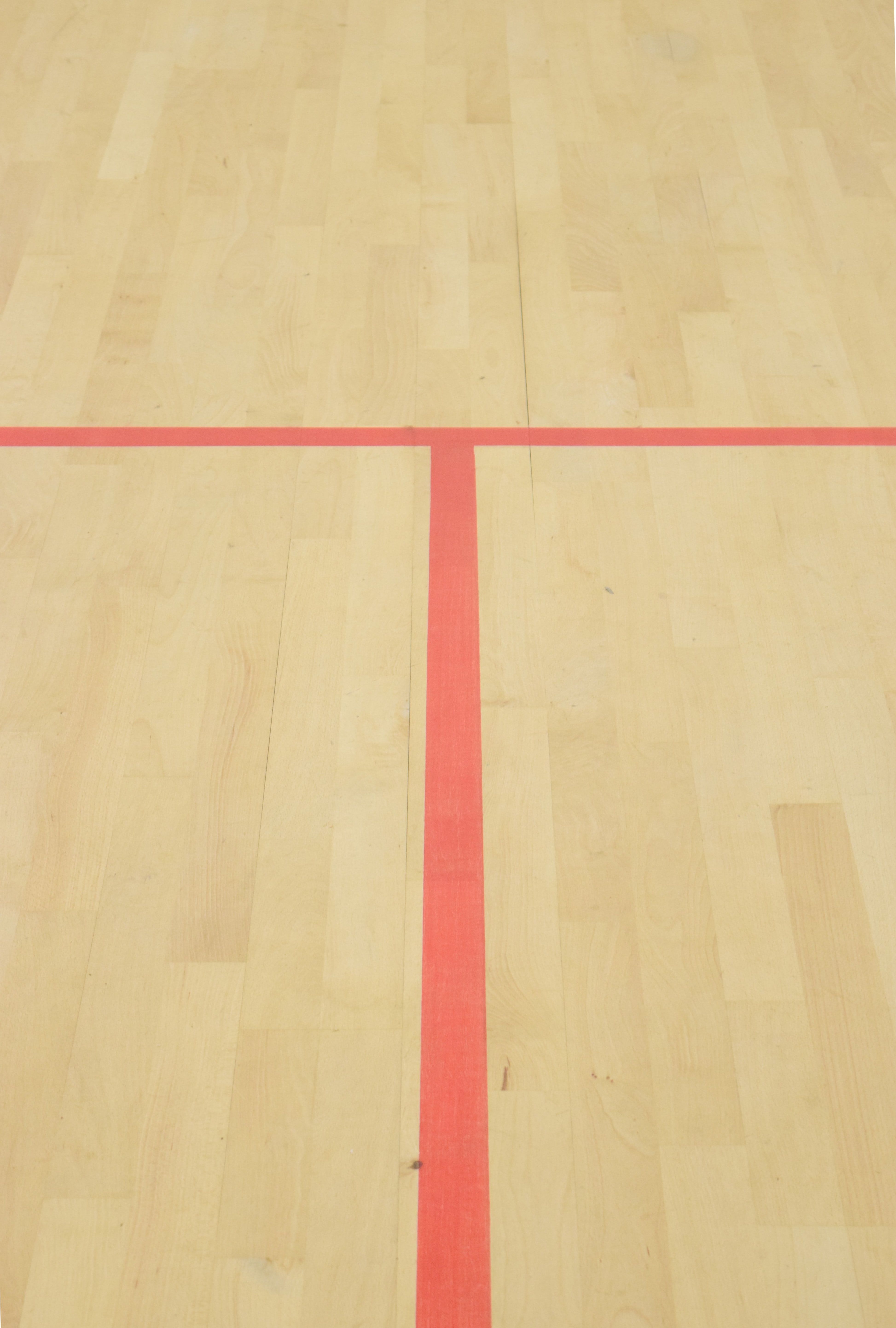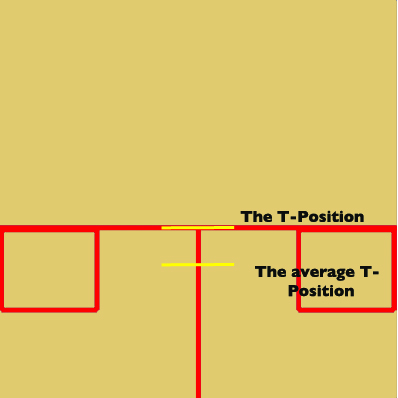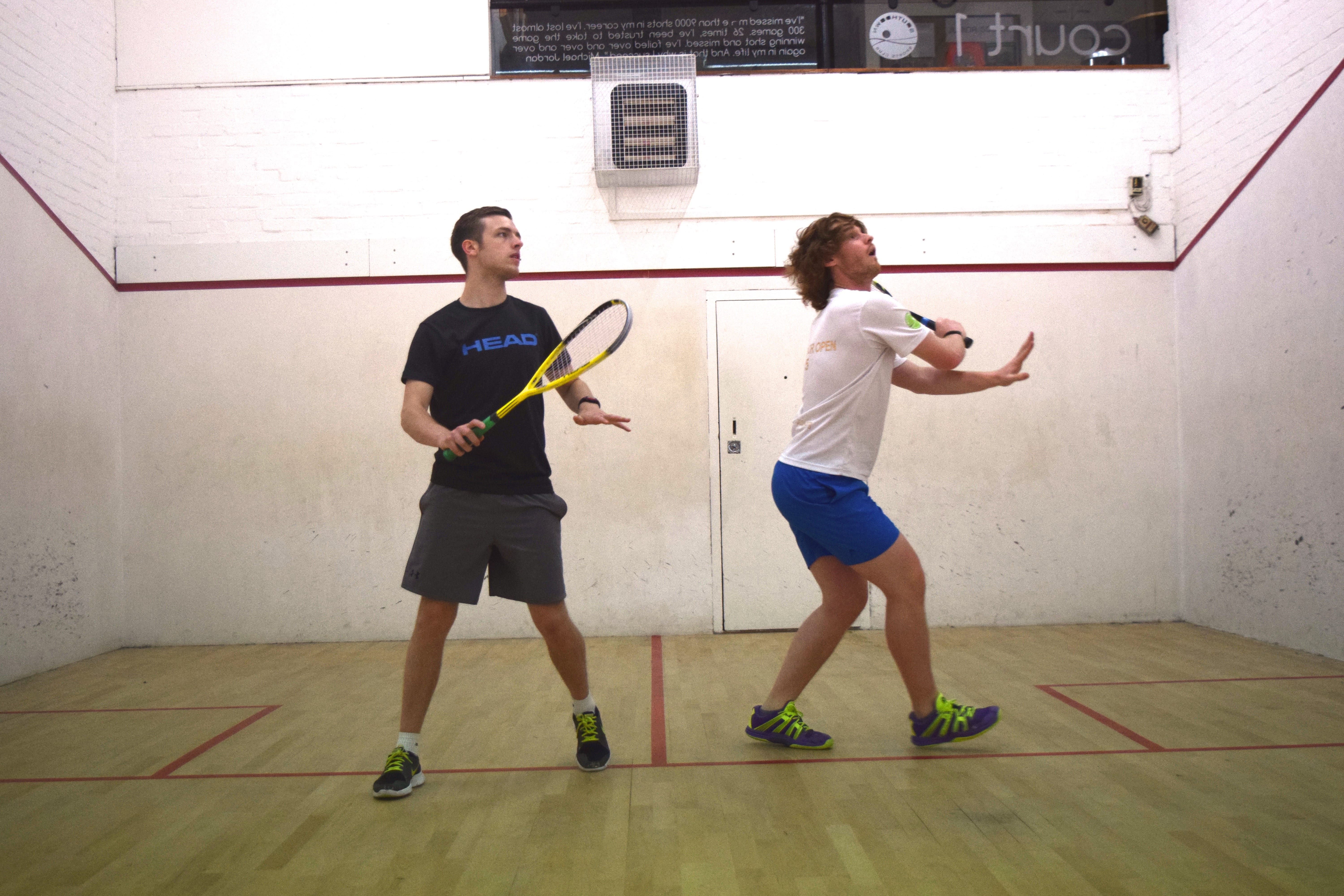An Introduction to the T-Position
The T-Position is the T shape in the middle of the court where the mid-line/short-line meets the line dividing the back half of the court, which is roughly in the centre of the court.
After every shot, you should try to get as close to the T-Position as possible. The T-Position is all about creating gaps and open spaces on the court. If you are on the T-Position, you will typically create a gap between your opponent and the T-Position, which will give you the chance to play a shot into this gap and make them run. However, if you’re not on the T-Position then the gap is between you and the T-Position, which means your opponent is going to make you run.
So the idea is to minimise the gap between you and the T-Position distance-wise but also in terms of time too. You want the time spent away from the T-Position and the distance between you and the T-Position to be as small as possible.
Defensive: Able to move anywhere
From the T-Position you will be able to move anywhere on the court to return your opponents next shot. After your shot, if you wait where you played the shot from, you’ll find that you leave big gaps for your opponent to hit the ball into on the court. For example, if you stand to the left side of the court, you’ll leave a big gap open for your opponent to hit the ball into on the right side of the court.
Offensive: Able to hit the ball anywhere
If you’re on the T-position, you deprive your opponent of any easy shot choices and you can avoid being dragged about by your opponent. You can also then starting looking to to hit the ball into open spaces yourself and use the gap between your opponent and the T-Position.
You’ll also get more opportunities to volley from the T-Position and have more control the match in general.
Where actually is the T-Position?
We often refer to the T-Position as the middle of the court, although most of you will have noticed it is actually south of the mathematical centre. Even then, the actual posting most of us take up when we get back towards the T-Position after playing our shot is even deeper still. This deeper position is not necessarily beneficial or wise though as from here you will get fewer volley opportunities than if you were higher up the court and you will also be vulnerable to a short shot.
However, the ideal position is subject to change depending on the conditions of the ball and the court. On a hotter court, you can afford a deeper position as you will still be able to cover most short shorts, as the warmer ball will bounce more. The same is true if you are playing with a single dot or bouncier ball. Conversely, on a cold court you’ll need to press high up the court as the ball will bounce and land shorter in the front corners when drops are played.
The tactics behind the T-Position
The T-Position with the ball – looking for the gap
As mentioned, as well as getting back to the T-Position, it’s also a great advantage to being on the T-Position when you are playing your shot. Put simply, if you have the T-Position, they don’t. This means that there will be a gap somewhere on the court for you to hit the ball into to make them run. If you are in front of your opponent and in a central area, you have a great opportunity to go short and really stretch your opponent, as there will be a gap at the front of the court.
Furthermore, you will be in position to take advantage of any volley opportunities that come your way, which can be another huge advantage for applying pressure to your opponent. This allows you to dictate the rally and affect the pace of the game more easily. You can volley more to speed the rally up or even slow it down with a series of well placed shots.
In short, there is no end to the advantages of being on or close to the T-Position regardless of whose shot it is.

If your opponent has the T-Position…
If your opponent is playing their shot while holding the T-Position, you also need to make sure you are close to the T-Position. If not, you’ll find yourself doing a lot of running because you’ll leave a big gap somewhere on the court for your opponent to hit the ball into. If they’re on the T-Position themselves then obviously you can’t knock them off but try to get as close as you can without endangering yourself (typically this is somewhere around the back of the service boxes). Being right up behind your opponent also applies mental pressure to them, as they’ll know you’re chomping at the bit waiting for their shot. Players know when their opponent is breathing down their neck behind them and often try to be too clever or play too low a drop as a consequence, which can result in errors and poor decisions.
If the T-Position is vacant as your opponent is retrieving a shot in the front corner, stay up as high as you can on the T-Position. They will be caught between playing a drop and potentially teeing you up or playing a length shot knowing you are standing behind them ready and waiting. Often, this panic results in overhit drops and under hit length.
You must ensure you don’t leave any easy shots on and that you deny them clear opportunities. If you do this, they’ll be under more pressure mentally as they’ll wonder what it will take to beat you!
It’s the way that you do it…
It’s not just beginner players that are guilty of poor T-Positioning though, as many experienced players sit deep on T-Position without the ball and therefore allow their opponents breathing space. You’d be surprised at how much more dangerous your shots become if you take them even half a second earlier or an inch higher up the court. It’s more about what you do with your position that where you stand.
If you’re high up on the actual T-Position, you can volley earlier and more easily. If you sit deeper, you’ll not only miss plenty of opportunities to volley but those shots you do take on the volley will be a second or two later than they could be, which is a second or two more your opponent has to recover and prepare. Playing just a few shots from a high position on the court will start to panic your opponent and often leave them a little indecisive for spells.
If you can keep a player behind you when they have the ball they will grow increasingly concerned by how difficult it seems to dislodge you. They’ll know they need to play a good shot in order to prevent you attacking them from the T-Position and so will usually seek to pacify you with a length shot rather than attack you. If you’re in a strong position, there really is no easy shot for your opponent and they have to keep toiling away looking for an opening, which very quickly starts to become demoralising.
If your control and use of the T-Position is not up to a high standard, you will allow your opponent to be more relaxed in these situations and they are therefore likely to play a better shot and most likely punish you.
You have to use the T-Position to press high up the court and limit your opponent’s options, whilst also enhancing your own position by dictating the game and applying mental pressure by taking the ball a split-second earlier.


